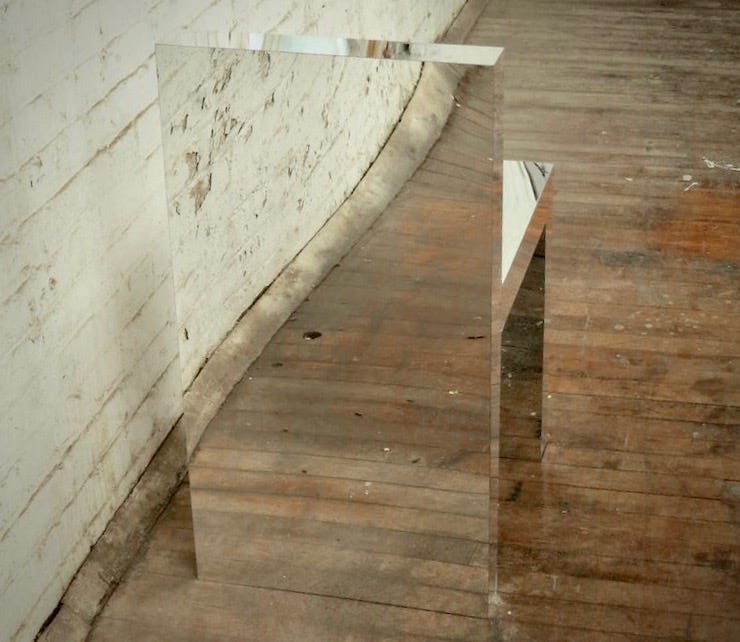In Part 1, physical weakness from fluoridation was observed in Five Eyes countries from the mid-1900's though its ill effects were known before its introduction to civic water supplies. Doctor’s objections were shut down by peers in medicine and law but also industry, the latter of whom benefitted from aluminium waste and fluoridated water being propagandised as the ‘greatest health achievement of the 20th century’.
Adverse reactions were further enhanced by removal of iodine from general practice and food supplies in the following decades. This coordination suggests premeditation.
Along with over-the-counter issues like general malaise, fatigue, head-aches etc., a form of madness called myxoedema developed — which is now rebranded as severe hypothyroidism — afflicting those whose thyroid could be ‘corrected’ by a lifetime’s subscription to pharmaceuticals with their own side-effects, illustrating the circular problem-reaction-solution merchant business model defining the modern world.
Part 2 discovered that doctor was originally a term for men of the church. These spiritual advisors and supposed men of health were also men of the law but it was seen that the meaning of the word doctor was modified to include falsify in the 1700’s.
Merchant Phoenicians of Tyre appeared to have built the world through language, luxury goods and city-states, teaching worthy inhabitants like Plato the written word and philosophy etc.. Through characteristic patterns of development, the Phoenicians (also known as Pythagoreans) were traced back to their point of origin, India — a group stemming from the original Indus Valley — Hindus. But the Rig Veda stated they were not to be trusted…
Then, the Catholic and Cathar’s etymological root was prodded.
In Part 3 one looks through a thousand year lens of increasingly humanitarian state-sponsored death penalties. The original police-state began with the peaceful Cathars who walked into raging bonfires singing hymns in rejection of the Catholic doctrine. Modern forms of the practice (ie. electric chair, lethal injection) are briefly covered.
Why a focus on the grim subject of death? Because by investigating the sorry tale of phonetically named, etymologically related Catholics and Cathars, the inquiring ear is lead to the Katha Upanishad, which is also known as ‘Death as a Teacher.’
The last thousand years of the Yuga cycle dropped humanity down to its lowest ebb.
(A solid grasp of the Kali Yuga is helpful in understanding this vast cyclic picture.)
Phonetics, choice of words and linguistic sleights are the means by which the extraordinary, virtually invisible Phoenicians are subtly but unmistakably seen.

2020 is a optometrical expression for perfect vision. The Vedas, ancient religious texts of Hinduism, were so named from the ability to see (metaphysic reality). The Vedas are still literally seen & heard in Latin videre = to see; and modern Italian vedere = to see.
The Catholic church is referred to as the Holy See. The reason behind the Medicine and Priest Class triptych is that the peaceful Cathars and powerful Catholics — two groups with entirely different objectives — appeared to know the metaphysic secrets of death and named themselves in alignment with these sacred secrets, while the Phoenixes rebirth cycle is directly related to the trading Phoenicians via phonetics.
The last hundred years in the west have been a prolonged and extremely sophisticated cosmic illusion (maya) from physics to entertainment. Maya is a subtle veil that clouds understanding. Revelation means the ‘rending’ or tearing away of the veils of illusion.
—The Katha Upanishad (shortest ever version)—
The Katha Upanishad is a story about young Natchitketas (Nat. for short today) who annoyed his Brahman father while said father was attempting a sacred ritual (though doing so in a superficial manner). Finally, after he’d become annoyed beyond endurance, his father lost the plot completely, cursed Nat. and sent him to Yama, Lord of Death who luckily happened to be a most benevolent and gracious fellow.
Unfortunately Yama was out when Nat. called, but happily— to make up for the lack of hospitality — Lord Yama offers his wise guest three blessings or boons on his return. He grants the first two (incredible) boons, but rather than answer the third… “What happens after liberation of the soul?”… Yama offers Nat every worldly form of wealth, beauty, luxury, fame, kingship and temporal power to avoid the question.
But no! Nat desires only true knowledge of reality.

For some, reading or listening to the Katha Upanishad might be like pouring potent gold elixir on to a hard rock — nothing will be absorbed. But in time the rock softens with the pain of the cycle of samsara — the mysterious, confusing, seemingly endless cycle of life, death and rebirth. But one day the rock absorbs it and becomes pure gold.
Spoiler alert; plain old death is not the end of the show —
one must actively seek the exit’s narrow gate.





"The exit's narrow gate..." yes. I think i saw the gate, once whilst in an 11 day coma, after a motorbike crash. To me, that 11 days lasted millennia and I died many, many times. I tricked it, or it tricked me 🤗 and thus, I'm here.
The much-acclaimed flourishing of science and knowledge of the physical world denoted by the accumulation of superficial data, fact-collection and the systematisation of facts, seems to have taken place in parallel with the secreting (of the concealing kind, and not excretion) of deep knowledge and the perception of the long wave resonances that cross all space and all time, and that are the invisible background of reality. Thank you for tapping into this and giving your readers a glimpse.